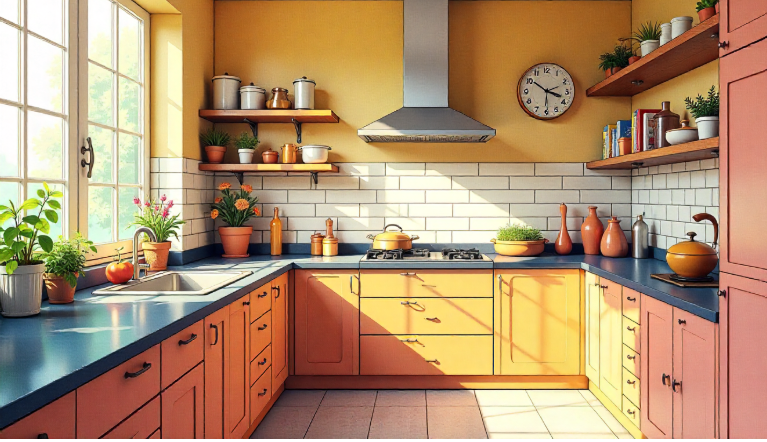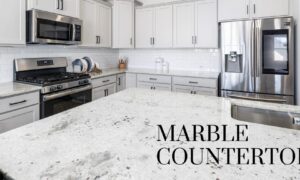Designing a kitchen or bathroom isn’t just about functionality — it’s about creating harmony between textures, tones, and finishes. One of the most common design dilemmas homeowners face is whether to match or contrast countertops with tiles. The choice can completely transform the room’s aesthetic, influencing its visual flow and ambiance. This guide unpacks the design logic, practical considerations, and style strategies to help you make an informed, elegant decision.
Understanding the Role of Countertops and Tiles in Interior Design
Both countertops and tiles serve as visual anchors in kitchens and bathrooms. Countertops dominate horizontal space, while tiles shape the backdrop and vertical dimension. Together, they define the design’s tone — from minimalist modern to rustic charm.
Key design functions:
- Countertops: Establish material luxury and tactile appeal.
- Tiles: Frame the design, adding rhythm, reflection, and accent.
- Interaction: The balance between both determines contrast, cohesion, and perceived space.
When harmonized thoughtfully, these surfaces can elevate even the simplest interiors into sophisticated, high-value spaces.
Matching Countertops and Tiles: When Harmony Works Best
Matching surfaces offer a cohesive, clean, and timeless aesthetic — ideal for minimalist and contemporary interiors.
Advantages of matching designs:
- Creates a seamless, unified look that visually expands the space.
- Works well in small bathrooms or kitchens where uniformity enhances openness.
- Reduces visual clutter, emphasizing texture and light reflection instead of color variation.
Best combinations for matching aesthetics:
- Marble-on-marble: Perfect for luxurious, classic interiors.
- Quartz with glossy porcelain tiles: Offers a modern, durable finish.
- Neutral stone with neutral tiles: Beige, taupe, and cream tones foster serenity.
However, matching doesn’t mean identical. Slight tonal variations or textured differences can add sophistication without breaking harmony.
Contrasting Countertops and Tiles: For Bold and Dynamic Interiors
Contrasting materials create visual drama and personality. This approach suits modern, industrial, or eclectic homes where design storytelling takes center stage.
Why contrast works:
- Introduces visual depth and layered complexity.
- Highlights key design elements (e.g., dark counters against white subway tiles).
- Allows homeowners to define zones within open-plan spaces.
Popular contrast styles:
- Dark countertops + white tiles: Crisp, high-end contrast with timeless appeal.
- Textured backsplash + smooth quartz counter: Adds tactile intrigue.
- Color blocking: Blue tiles with white countertops create a statement look.
Contrasts should be intentional and balanced — too much variation can overwhelm the eye. Consider coordinating undertones to maintain flow between materials.
Practical Factors to Consider Before Deciding
Beyond aesthetics, functionality and maintenance should guide your decision.
Key factors:
- Lighting: Warm or cool lighting affects how colors and contrasts appear.
- Room size: Matching tones visually enlarge spaces; contrasting tones define zones.
- Material durability: Choose water-resistant tiles and stain-proof countertops.
- Cleaning routines: Glossy finishes highlight smudges, while matte textures mask them.
When designing bathrooms, the decision should also complement moisture control and ventilation systems, ensuring longevity and easy upkeep.
If you’re updating your bathroom design, it’s essential to explore options to buy wall tiles for the bathroom that combine durability with modern elegance. Selecting the right tile finish can make or break your bathroom’s cohesive appeal.
The Psychology of Color and Texture Coordination
Color theory plays a major role in determining whether to match or contrast. Designers often rely on psychological color pairing to evoke specific moods.
Matching combinations evoke:
- Calmness
- Balance
- Minimalism
Contrasting combinations evoke:
- Energy
- Creativity
- Luxury
Pro tip: Mix textures instead of colors if you want subtle differentiation. For example, a matte counter with a glossy backsplash creates intrigue without visual chaos.
How Temperature and Environment Influence Design Longevity
Environmental factors such as humidity and temperature shifts can impact material performance — especially in kitchens and bathrooms. Proper ventilation and climate control extend the life of tiles and countertops, maintaining their luster and integrity.
Interestingly, HVAC systems also influence wardrobe and fabric longevity, as discussed in studies examining the impact of air conditioning on men’s wardrobe care. The same principle applies to interior finishes: controlled environments preserve materials better over time.
This synergy between environment and design underlines the importance of considering how daily conditions — like temperature fluctuations and humidity — affect material cohesion and durability.
Expert Tips for Perfect Countertop–Tile Pairing
To strike the perfect balance between form and function, designers follow a few golden rules:
- Test samples under real lighting: Natural and artificial lighting can alter how materials appear.
- Use a consistent undertone palette: Warm or cool undertones should align across all surfaces.
- Limit bold elements: If your tiles are patterned, keep countertops neutral, and vice versa.
- Add visual anchors: Metallic fixtures or wooden accents can ground the overall design.
- Prioritize maintenance: Choose finishes that align with your cleaning habits and lifestyle.
Common Design Mistakes to Avoid
Avoiding visual discord is as important as achieving harmony. Key pitfalls include:
- Ignoring undertones (e.g., pairing warm beige with cool gray).
- Overusing patterns that compete for attention.
- Selecting trendy materials without long-term vision.
- Forgetting functional balance, beauty should never compromise usability.
Conclusion: Balance Is the New Luxury
Whether you choose to match or contrast your countertops and tiles, the secret lies in intentionality. Harmony doesn’t always mean similarity, and contrast doesn’t always mean chaos. When executed with strategic design thinking, both approaches can create spaces that feel balanced, functional, and deeply personal.
Ultimately, your goal should be to design a space that reflects your lifestyle — one that feels cohesive, inspiring, and built to last. In the modern design narrative, balance is the new luxury.



































